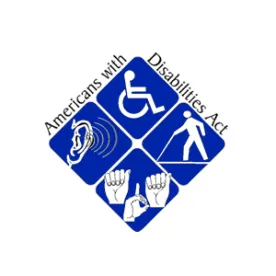What happens when, at the end of a good faith interactive dialogue and despite the parties’ best efforts, there is apparently no reasonable accommodation that will enable the employee to perform the essential functions of their job? Can the employer safely terminate, resting assured it has done all it can and that such an employee is not a “qualified individual” under the ADA? Not if the employer has at least 15 employees. The Americans with Disabilities Act (ADA) expressly identifies reassignment as an accommodation that will be reasonable in some circumstances. Employers who view the reasonable accommodation process as limited to the employee’s own job are at significant risk of disability discrimination claims.
When must an employer consider reassignment?
Reassignment is considered an accommodation “of last resort,” meaning that there is no obligation to consider reassignment to another position until it is determined that the employee cannot be accommodated in their own position.
What are the limits of an employer’s obligation to reassign a disabled employee?
The law is clear that an employer need not create a position in order to make reassignment possible; nor is an employer required to bump an employee from a position in order to create a vacancy. The reassignment accommodation is limited to existing jobs that are currently vacant, or that the employer knows will become vacant in near future. Employers do not need to consider positions for which the employee is unqualified. Moreover, if the only available and suitable position constitutes a demotion or pays less than the employee is earning in their current job, the employer may nonetheless reassign the employee to that position, reducing the employee’s rank or compensation as appropriate for the new position.
Does reassignment simply mean allowing the employee to compete for a vacant position, or must an employer prefer a minimally qualified disabled candidate over other, more qualified, candidates?
The answer to this question is unsettled, and varies by jurisdiction. The Equal Employment Opportunity Commission (EEOC) has long taken the position that a disabled employee unable to perform their own job and minimally qualified for a vacant position must be placed in the vacant position, without being required to compete for it, even if there are other more qualified applicants for the job and even if the employer has a best-qualified applicant policy.
Several United States Circuit Courts of Appeal (e.g. 7th, 10th, and D.C.) have effectively agreed with the EEOC, either expressly requiring preferential treatment for the disabled individual requiring reassignment or holding that, to be meaningful, reassignment as a reasonable accommodation must require more than the mere opportunity to apply and compete for a position. Others, however, (e.g. 5th, 6th, 8th, and 11th) have held that the ADA does not require “affirmative action.” The 1st Circuit Court of Appeals has not yet been called upon to confront the issue directly, but a statement in a relatively recent 1st Circuit decision has led many to speculate that, when forced to decide the question, it will hold that preferential reassignment is required. Audette v. Town of Plymouth, 858 F.3d 13, n. 10 (1st Cir. 2017).
Although the United States Supreme Court has not weighed in on this precise question, it has held that an employer was not required to reassign a disabled employee to a vacant position when another employee was entitled to the position under an established seniority system. U.S. Airways, Inc. v. Barnett, 535 U.S. 391 (2002). Whether the Court would find that a best-qualified applicant policy is akin to a seniority system is an open question, and the answer could depend, at least in part, on whether the best-qualified applicant policy is well-established, reduced to writing, and consistently followed by the employer, as the seniority system was in Barnett.
While different jurisdictions have defined the scope of the reassignment accommodation differently, one thing is clear: the ADA expressly contemplates that reassignment may be a reasonable accommodation. Thus, when the interactive dialogue fails to identify an effective accommodation that would keep the employee in their current job, the employer must consider whether there are other vacant positions the employee can perform, with or without reasonable accommodation.




 />i
/>i

